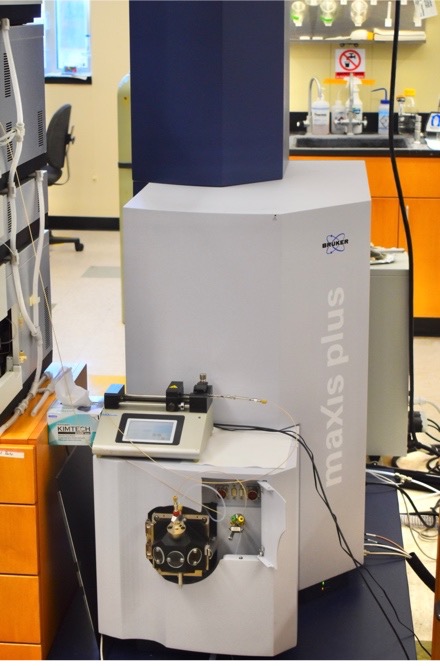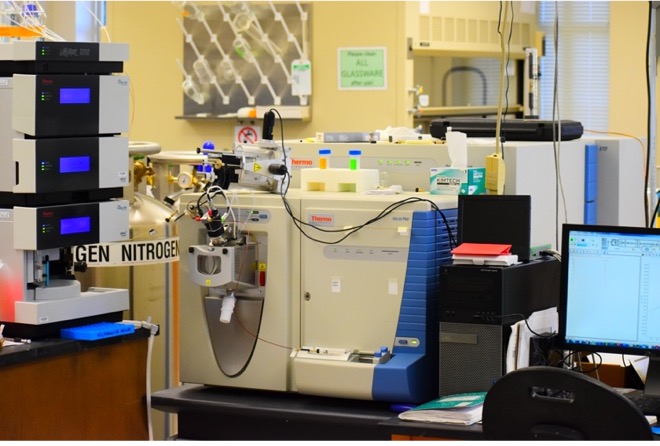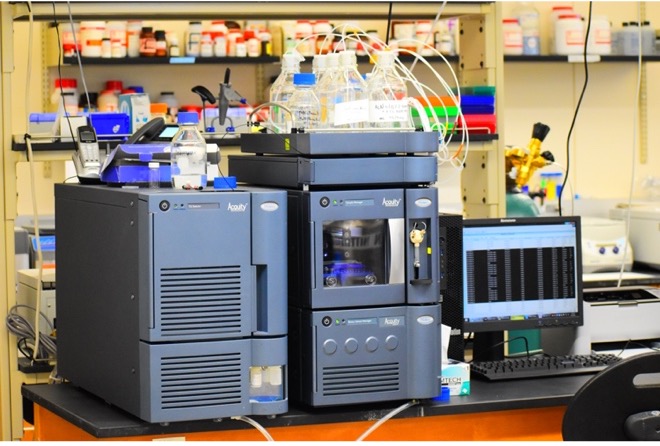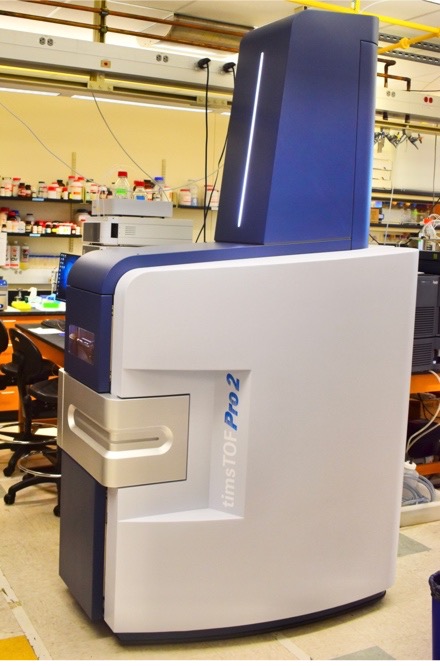About our Core
The mission of the UTSA Mass Spectrometry & Proteomics Core (MSPC) is to provide routine and custom mass spectrometry-based support to UTSA research programs and the broader research community. Initially called the Protein Biomarkers Core, the MSPC was established with support from the National Institutes of Health through the Research Centers in Minority Institutions (RCMI) program of the National Institute on Minority Health and Health Disparities. The MSPC was renamed in 2020 to better reflect the wide range of services that the core now offers as well as the diversity of research applications that we support.
Under the direction of Scientific Director, Dr. Wendell P. Griffith, the MSPC offers services in three main areas:
- High-resolution, high mass accuracy mass analysis (HRMS)
- Liquid chromatography-mass spectrometry (LC-MS)
- Proteomics-based analyses
Note that Working with the MSPC is not limited to just the services listed on our website. We routinely develop new services as well as analytical methods for custom analyses for a number of our users in an endeavor to meet the needs of all UTSA researchers. Investigators interested in working with the UTSA Mass Spectrometry & Proteomics Core or discussing how mass spectrometry can be incorporated to enhance/advance research projects in their laboratories are encouraged to reach out to us via the information on our Contacts page.
The MSPC features several major instruments. These include:
- maXis quadrupole time-of-flight (QTOF) high-resolution mass spectrometer with electrospray ionization (ESI) and atmospheric pressure chemical ionization (APCI) sources
- Orbitrap Elite high-resolution mass spectrometer with electrospray ionization and nanospray ionization sources
- Acquity LC-MS system with triple quadrupole mass analyzer
- timsTOF Pro II QTOF high-resolution mass spectrometer with trapped ion mobility.
Instrumentation

This instrument is equipped with electrospray ionization (ESI) and atmospheric pressure chemical ionization (APCI) sources and is used for the majority of HRMS analyzes. A direct insertion probe is available for the APCI source for the analysis of solid compounds and those with limited solubility in MS-friendly solvents.
For the HRMS service, mass analysis can be carried out for most classes of molecules including small organic molecules (with molecular weight < 1000 g/mol); larger molecules (with molecular weight > 1000 g/mol); biomolecules like peptides, proteins, lipids, carbohydrates; and metal-ligand complexes just to list a few examples. For this service, high resolution and highly accurate mass measurement can be used to predict and/or confirm the chemical composition (chemical formula) for synthetic products, which is a requirement for publication in a large number of journals.
For increased confidence, tandem mass spectrometry (MS/MS) can be applied to produce structurally diagnostic fragments, which can be used to confirm the structures of compounds, determine various functional groups/substituents that may be present, and even distinguish between structural isomers.
Contact Us

Wendell P. Griffith, Ph.D.
Research Core Director
Office: BSE 1.104N
Lab: BSE 3.108A
T: (210) 458-5180
E: Wendell.Griffith@utsa.edu
E: Mass.Spectrometry@utsa.edu
Dr. Griffith specializes in applications of high-resolution, high-mass accuracy mass spectrometry to the analysis of a wide range of analytes from small organic molecules and metallic nanoclusters to peptides and intact proteins; as well as various techniques in proteomics. His doctoral work at the University of Massachusetts-Amherst involved using native mass spectrometry to study the structures and dynamics of proteins and noncovalent protein complexes.
During his postdoctoral fellowship at The Johns Hopkins University School of Medicine, he focused on proteomics methods for qualitative and quantitative analysis of posttranslational modifications to proteins. Just prior to his role at UTSA, Dr. Griffith spent several years as faculty at the University of Toledo.




